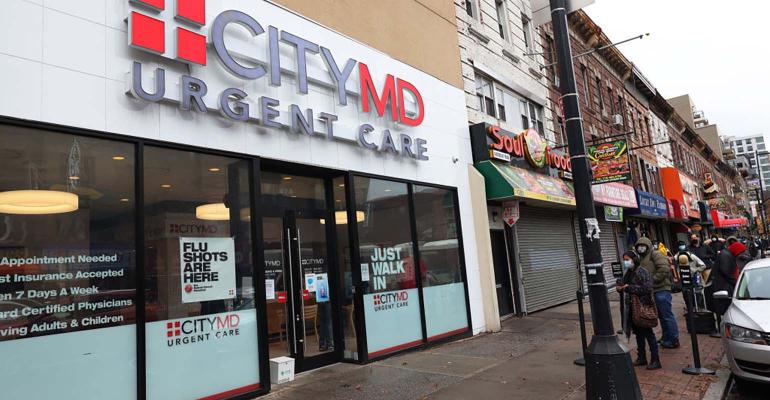You’ve probably noticed a shift happening around you. Retail spaces and healthcare services are becoming increasingly entwined, resulting in a new era of commercial real estate. This isn’t just a random occurrence—it’s a strategic move driven by the evolving needs of consumers. As our expectations evolve, so does the way we access healthcare, and this is having a big impact on the real estate needs of both sectors.
Retail healthcare trends really took off when the pandemic hit, and more and more healthcare providers are embracing retail real estate strategies. Pharmacies, grocery stores and pop-up clinics are becoming the norm for healthcare services. This shift is all about providing medical care in a more convenient and accessible way, mirroring the ethos of retail. Convenience is key in this new era, as consumers are looking for healthcare solutions that fit seamlessly into their busy lives.
Benefits and challenges of the retail healthcare market
By embracing a retail mindset, healthcare providers can expand their reach, offering services to underserved communities, while harnessing data analytics to better understand their customers’ needs and preferences. This customer-centric approach translates to more personalized experiences, propelling consumer retail healthcare forward and presenting more opportunities for healthcare organizations to grow.
Landlords are also starting to see the potential of these retail healthcare trends. Having healthcare tenants in their retail spaces not only provides tenant diversity, but also drives foot traffic, boosting visibility for other retailers. It’s a breath of fresh air for the retail sector, which has been grappling with the rise of e-commerce and pandemic-related challenges.
However, this convergence is not without its challenges. Healthcare providers are now in competition with bricks-and-mortar retailers. This new dynamic has triggered a competitive race for premium retail spaces, making the real estate landscape a crucial player in this growing trend.
Evolving real estate needs and investor confidence
With retail healthcare trends gaining traction, the real estate demands of the healthcare industry are evolving. Gone are the days of building standalone medical campuses—now, healthcare providers are after retail spaces, aiming to reap the benefits of the foot traffic, convenience, and accessibility these locations offer.
This new direction in healthcare delivery is boosting investor confidence in medical office buildings, with average asking rents rising and development strongly linked to population growth. As the demand for healthcare grows, real estate is playing a pivotal role in creating more efficient and accessible healthcare systems. This ongoing evolution is setting the stage for sustained growth and expansion in the healthcare real estate sector.
The commercial real estate perspective
If you’re a stakeholder in the commercial real estate industry—be it an investor, broker, developer, designer, or property manager—you’re likely turning your focus to healthcare real estate portfolios. Hospitals and health systems are viewed as creditworthy tenants with predictable needs, making healthcare real estate a highly desirable and stable investment alternative compared to retail, office, or hospitality assets.
The growth of bricks-and-mortar spaces for healthcare is having a significant impact on the commercial real estate industry. The emphasis on smaller, more flexible healthcare facilities that can be located within retail spaces is leading to a few things:
- Increased demand for retail space. The trend is driving up demand for retail space, potentially leading to higher rents and increased competition for prime retail locations.
- Repurposing of existing commercial space. Vacant department stores or other large retail spaces may be converted into multipurpose medical facilities housing a range of healthcare services.
- Changes in facility design and construction. The design and construction of healthcare facilities are changing to accommodate smaller, more flexible facilities that fit within retail spaces.
- Greater emphasis on customer-centric design. With healthcare facilities aligning more closely with the retail environment, a greater focus is being placed on creating customer-friendly spaces. This includes retail-style displays and signage, welcoming waiting areas, and a focus on creating an overall more pleasant and less intimidating healthcare experience for patients.
So, what does all this mean?
The convergence of healthcare and retail is more than a trend; it’s a fundamental shift in how we think about healthcare delivery and real estate. We’re not only witnessing a change in healthcare delivery methods, but also in the way we perceive and use retail spaces. This change is reshaping the idea of retail real estate, encouraging those involved to reevaluate their approaches and welcome this new landscape.
Remember, this new era of consumer retail healthcare is just beginning. As this evolution continues, those in the commercial real estate sector must be prepared to adapt and innovate, embracing new strategies and solutions that align with retail real estate trends and the changing needs of the healthcare market. With a strategic mindset, innovative solutions, and a deep understanding of the evolving market, the commercial real estate industry is not just set to survive, but thrive in the age of retail healthcare.
Matt Giffune is a co-founder of Occupier, a lease management software platform helping commercial tenants and brokers manager their real estate footprint and comply with lease accounting standards. He is based in Boston.

